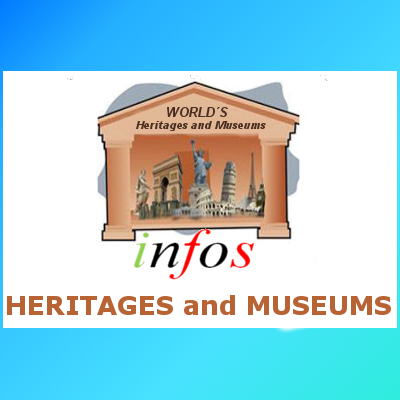What You Need To Know
Guangzhou, traditionally romanised as Canton, is the capital and largest city of the Province of Guangdong in southern China. Located on the Pearl River about 120 km (75 mi) north-northwest of Hong Kong and 145 km (90 mi) north of Macau, Guangzhou was a major terminus of the maritime Silk Road and continues to serve as a major port and transportation hub. Guangzhou is, at the moment, the third largest city in mainland China, behind Beijing and Shanghai; holds sub-provincial administrative status; and is one of China’s five National Central Cities. In 2015 the city’s administrative area was estimated to have a population of 13,501,100 and forms part of one of the most populous metropolitan agglomerations on Earth. Some estimates place the population of the built-up area of the Pearl River Delta Mega City as high as 44 million without the Hong Kong SAR and 54 million including it. Guangzhou is identified as a Beta+ Global city. In recent years, there has been a rapidly increasing number of foreign residents and illegal immigrants from the Middle East, Eastern Europe and Southeast Asia, as well as from Africa. This has led to it being dubbed the “Capital of the Third World”. The migrant population from other provinces of China in Guangzhou was 40 percent of the city’s total population in 2008. Most of them are rural migrants, and they speak only Mandarin. Guangzhou was long the only Chinese port permitted for most foreign traders. The city proper fell to the British and was opened by the First Opium War. It lost trade to other ports such as Hong Kong and Shanghai, but continued to serve as a major entrepôt. In modern commerce, Guangzhou is best known for its annual Canton Fair, the oldest and largest trade fair in China. For the three consecutive years 2013–2015, Forbes ranked Guangzhou as the best commercial city on the Chinese mainland.
Area: 2,870 mi²
Population: Estimate 13.5 million
Currency
-
Renminbi, In English you can refer to the Chinese dollar. In Chinese it has 3 common names and 2 symbols in use: Renminbi 人民币 means People’s Currency and is abbreviated RMB (Renminbi). Yuan 元 means Dollar and is abbreviated CNY (Chinese Yuan).
Economy
Guangzhou is the main manufacturing hub of the Pearl River Delta, one of mainland China’s leading commercial and manufacturing regions. In 2013, the GDP reached ¥1542 billion (US$248 billion), per capita was ¥120,515 (US $19,459). Guangzhou is considered one of the most prosperous cities in China. But due to rapid industrialization, it is also considered one of the most polluted cities. The Canton Fair, formally the “China Import and Export Fair”, is held every year in April and October by the Ministry of Trade. Inaugurated in the spring of 1957, the fair is a major event for the city. It is the trade fair with the longest history, highest level, largest scale in China. From the 104th session onwards, the fair moved to the new Guangzhou International Convention and Exhibition Center (广州国际会展中心) in Pazhou, from the older complex in Liuhua. The GICEC is served by two stations on Metro Line 8. Since the 104th session, the Canton Fair has been arranged in three phases instead of two phases. Guangzhou is one the largest hubs of China’s illegal drug trade.
Ethnicity
Most of Guangzhou’s population is Han Chinese. Most of the local Cantonese people speak Cantonese as their first language, while most migrants speak forms of Mandarin. In 2010, each language was the native tongue of roughly half of the city’s population, although significant numbers speak other dialects as well. As with elsewhere in the People’s Republic of China, the household registration system (hukou) limits migrants’ access to residences, educational institutions, and other public benefits. In May 2014, legally employed migrants in Guangzhou were permitted to receive a hukou card allowing them to marry and obtain permission for their pregnancies in the city, rather than having to return to their official hometowns as previously. Historically, the Cantonese people have made up a sizeable part of the 19th- and 20th-century Chinese diaspora and many overseas Chinese have ties to Guangdong. This is particularly true in the United States, Canada, and Australia. Demographically, the only significant immigration into China has been by overseas Chinese, but Guangzhou sees many foreign tourists, workers, and residents from the usual locations such as the United States. Notably, it is also home to thousands of African immigrants, including people from Nigeria, Angola, and the Democratic Republic of Congo.
Health systems
Healthcare in China consists of both public and private medical institutions and insurance programs. About 95{60cfa93704b9d83237bbe7138efb6970befbbd210181499a8845d1d500df4388} of the population has at least basic health insurance coverage. Despite this, public health insurance generally only covers about half of medical costs, with the proportion lower for serious or chronic illnesses. Under the “Healthy China 2020” initiative, China is currently undertaking an effort to cut healthcare costs, and the government requires that insurance will cover 70{60cfa93704b9d83237bbe7138efb6970befbbd210181499a8845d1d500df4388} of costs by 2017. The Chinese government is working on providing affordable basic healthcare to all residents by 2020. China has also become a major market for health-related multinational companies. Companies such as AstraZeneca, GlaxoSmithKline, Eli Lilly, and Merck entered the Chinese market and have experienced explosive growth. China has also become a growing hub for health care research and development. The above applies to Mainland China. Taiwan and the Special Administrative Regions of Hong Kong and Macau maintain their own separate universal healthcare systems.
Language
The official language is Mandarin Chinese, bases on the dialect of the ethnic group the Han, originally from the North. This language is based on a Mandarin variation spoken during the Manchu dinasty in Beijing. Later, this language was adopted as official langiage for the People’s Republic of China and Taiwan, and it is one of th efour official languages in Singapore. It is also one of the six official languages at the United Nations.
Modern China
Revolutionary Guangzhou


Kuomintang Rule

After the assassination of Song Jiaoren and Yuan Shikai’s attempts to remove Nationalists from power; Hu Hanmin joined the 1913 Second Revolution against him but was forced to flee to Japan with Sun Yat-sen after its failure. Upon Yuan’s attempt to declare himself the Hongxian Emperor of China, Guangdong again revolted and became effectively independent on 25 June 1917 with help from the naval commander at Shanghai. In August, Sun Yat-sen established the Guangzhou Military Government as part of the Constitutional Protection Movement. It borrowed $2,000,000 from the German Empire for its army and navy, then declared war on it on September 13. The new Republic of China merged the eastern part of Nanhai County and the northern part of Panyu County with Guangzhou in 1918 and established an urban council to govern it. Amid the Warlord Era, the Guangzhou government was overwhelmed by Lu Rongting’s Guangxi Clique. Sun fled to Shanghai in November 1918 until Chen Jiongming restored him in October 1920 during the Yuegui Wars. The name Guangzhou was made official the next year. In January 1922, the Nationalists organized a major strike among the tens of thousands of dockworkers and sailors in Guangzhou and Hong Kong. On 16 June, Ye Ju assaulted Guangzhou’s presidential palace after Chen and Sun differed over whether to accept an accommodation with the Zhili Clique’s government in Beijing; Sun had already fled but his wife narrowly escaped shelling and rifle fire before meeting him on the gunboat Yongfeng under Chiang Kai-shek. In autumn, Sun and his party raised more than 500,000 Chinese dollars from supporters to recapture Guangzhou. Their mercenaries removed Chen on 15 January 1923, and he returned to the city on 21 February. His armies were then kept in the field largely through tax levies collected through the city’s efficient police force. In December, he planned to seize Guangzhou’s maritime customs duties but foreign gunboats led him to drop the plan. Sun and Chiang used Soviet funds and weapons to develop the Whampoa Military Academy on Changzhou from 1924 on. In August, they acted to confiscated weapons being purchased by the Canton Merchants’ Volunteer Corps. This led to rioting and a military stand-off in the western suburbs from 10–15 October; its suppression damaged Xiguan with large fire. During Sun’s life, his son Sun Fo served as mayor of Guangzhou when he was in power from 1920 on; his role did not survive Sun’s death by cancer in 1925. The “Canton Coup” on 20 March 1926 saw Chiang solidify his control over the Nationalists and their army against Wang Jingwei, the party’s left wing, its Communist allies, and its Soviet advisors. By May, he had ended civilian control of the military and begun his Northern Expedition against the warlords of the north. Ultimately successful, it turned him into the country’s paramount leader. Mao Zedong worked in the city, running the 6th term of the KMT’s Peasant Movement Training Institute from May to September 1926. In 1927, Zhang Fakui recovered Guangzhou from the New Guangxi Clique. Zhang’s suppression of the 11 December Guangzhou Uprising saw even greater numbers of Communists and suspect workers and students killed than at the Shanghai Massacre earlier in the year.
Communist takeover

Natural Resources
There are 47 different types of minerals and also 820 ore fields in Guangzhou, including 18 large and medium-sized oil deposits. The major minerals are granite, cement limestone, ceramic clay, potassium, albite, salt mine, mirabilite, nepheline, syenite, fluorite, marble, mineral water, and geothermal mineral water. Since Guangzhou is located in the water-rich area of southern China, it has a wide water area with lots of rivers and water systems, accounting for 10{cb3d2a28d8df3053a285e859fe7a32bb8a30b120473c9ecd54769b4baddc1760} of the total land area. The rivers and streams improve the landscape and keep the ecological environment of the city stable.
Religions
Qing-era Guangzhou had around 124 religious pavilions, halls, and temples. Today, in addition to the Buddhist Association, Guangzhou also has a Taoist Association, a Jewish community, and a history with Christianity and Islam.
Transport
Urban mass transit
When the first line of the Guangzhou Metro opened in 1997, Guangzhou was the fourth city in Mainland China to have an underground railway system, behind Beijing, Tianjin, and Shanghai. Currently the metro network is made up of ten lines, covering a total length of 306 km (190 mi). A long-term plan is to make the city’s metro system expand to over 500 km (310 mi) by 2020 with 15 lines in operation. The first section of the Haizhu Tram line opened on 31 December 2014. The Guangzhou Bus Rapid Transit (GBRT) system which was introduced in 2010 along Zhongshan Road. It has several connections to the metro and is the world’s 2nd-largest Bus Rapid Transit system with 1,000,000 passenger trips daily. It handles 26,900 pphpd during the peak hour a capacity second only to the TransMilenio BRT system in Bogota. The system averages 1 bus every 10 seconds or 350 per hour in a single direction and contains the world’s longest BRT stations—around 260 m (850 ft) including bridges.
Motor transport
In the 19th century, city already boasted over 600 long, straight streets; these were mostly paved but still very narrow. In 2009, it was reported that all 9,424 buses and 17,695 taxis in Guangzhou would be operating on LPG-fuel by 2010 to promote clean energy for transport and improve the environment ahead of the 2010 Asian Games which were held in the city. At present Guangzhou is the city that uses the most LPG-fueled vehicles in the world, and at the end of 2006, 6,500 buses and 16,000 taxis were using LPG, taking up 85 percent of all buses and taxis. Effective January 1, 2007, the municipal government banned motorcycles in Guangdong’s urban areas. Motorcycles found violating the ban are confiscated. The Guangzhou traffic bureau claimed to have reported reduced traffic problems and accidents in the downtown area since the ban.
Airports
Guangzhou’s main airport is the Baiyun International Airport in Huadu District; it opened on August 5, 2004. This airport is the second busiest airport in terms of traffic movements in China. It replaced the old Baiyun International Airport, which was very close to the city centre and failed to meet the city’s fast-growing air traffic demand. The old Baiyun International Airport was in operation for 72 years. Guangzhou Baiyun International Airport now has three runways, with two more planned. The Terminal 2 is under construction and will open in 2018.
Railways
Water transport
There are daily high-speed catamaran services between Nansha Ferry Terminal and Lianhua Shan Ferry Terminal in Guangzhou and the Hong Kong China Ferry Terminal, as well as between Nansha Ferry Terminal and Macau Ferry Pier in Hong Kong.
Weather
Located just south of the Tropic of Cancer, Guangzhou has a humid subtropical climate (Köppen Cfa) influenced by the East Asian monsoon. Summers are wet with high temperatures, high humidity, and a high heat index. Winters are mild and comparatively dry. Guangzhou has a lengthy monsoon season, spanning from April through September. Monthly averages range from 13.6 °C (56.5 °F) in January to 28.6 °C (83.5 °F) in July, while the annual mean is 22.6 °C (72.7 °F). Autumn, from October to December, is very moderate, cool and windy, and is the best travel time. The relative humidity is approximately 68 percent, whereas annual rainfall in the metropolitan area is over 1,700 mm (67 in). With monthly percent possible sunshine ranging from 17 percent in March and April to 52 percent in November, the city receives 1,628 hours of bright sunshine annually, considerably less than nearby Shenzhen and Hong Kong. Extreme temperatures have ranged from 0 °C (32 °F) to 39.1 °C (102.4 °F). The last recorded snowfall in the city was on 24 January 2016, 87 years after the second last recorded snowfall.











